Meteorites are fascinating relics from space that offer us a glimpse into the origins and mysteries of our Solar System. Over the years, collectors and scientists have discovered many extraordinary meteorites, each with its own unique story, composition, and significance. From the rarest Martian rocks to stunningly beautiful pallasites, these celestial fragments have captivated both experts and enthusiasts alike. In this article, we’ll explore the top 13 most unique meteorites ever collected, highlighting what makes each one so remarkable and why they continue to intrigue us.
Murchison Meteorite (Australia, 1969)
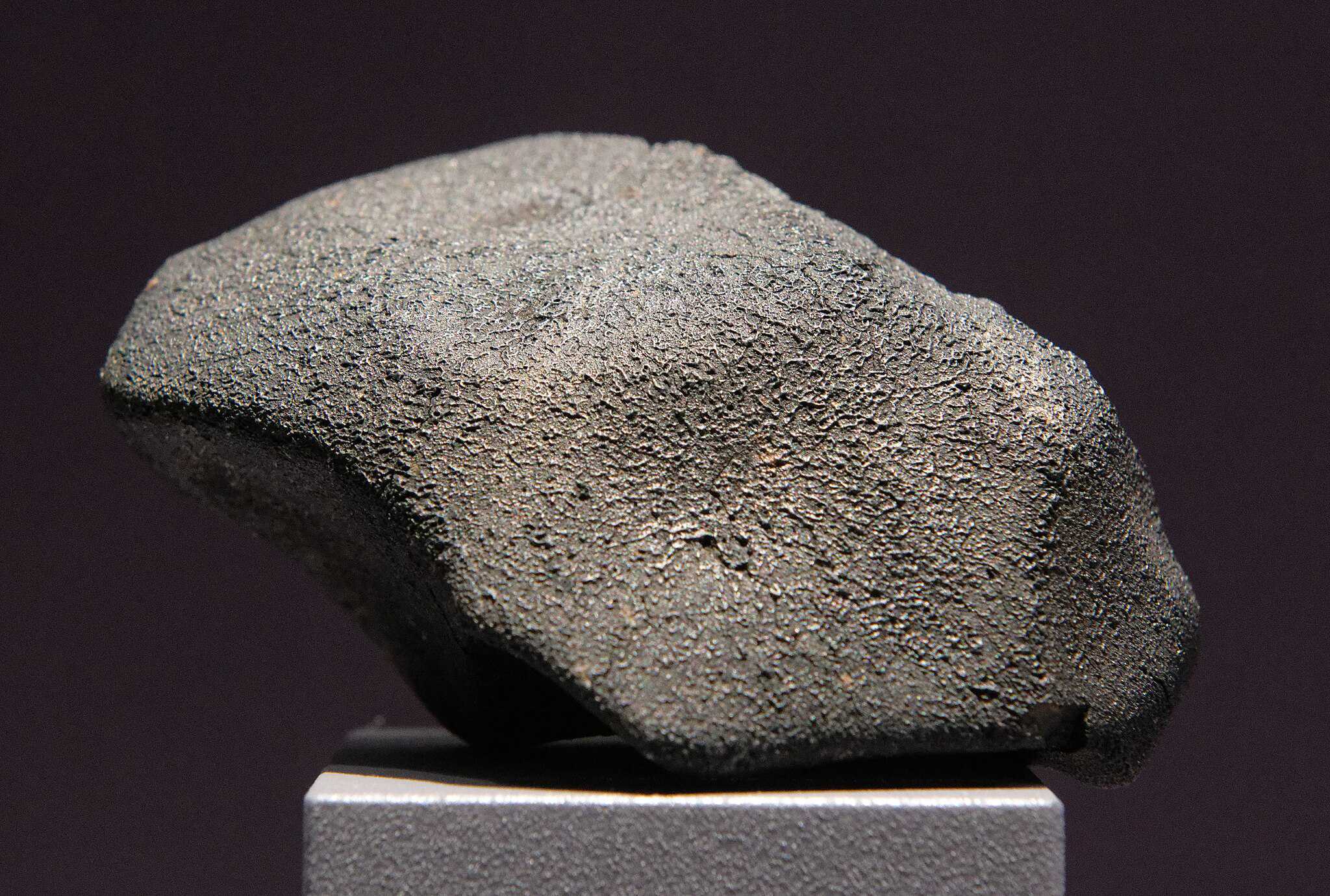
The Murchison Meteorite is renowned for its scientific significance due to its rich organic composition. When this meteorite fell near the small town of Murchison in Victoria, Australia, it brought with it a pungent odor reminiscent of methylated spirits, later identified as the smell of amino acids—the fundamental building blocks of life. What sets the Murchison Meteorite apart is its exceptionally high content of organic molecules, including over 90 different amino acids, some of which are not found on Earth. This suggests that the meteorite could hold clues to the origins of life in the universe. Its fragments have been studied extensively over the decades, contributing invaluable insights into the formation of the Solar System. Unlike most meteorites, the Murchison is a carbonaceous chondrite, meaning it contains a significant amount of water and organic materials, making it a prime candidate for understanding the early conditions of our Solar System and the potential for life elsewhere.
Fukang Meteorite (China, 2000)

Discovered in the Gobi Desert near Fukang, China, the Fukang Meteorite is one of the most visually stunning and scientifically fascinating meteorites ever found. This pallasite meteorite is composed of a nickel-iron matrix embedded with large, gem-quality olivine crystals, which range in color from golden yellow to deep green. The translucent olivine crystals are what make the Fukang Meteorite so extraordinary, as they allow light to pass through them, creating a dazzling display when the meteorite is sliced and polished. Pallasites are exceptionally rare, comprising only about 1% of all known meteorites, and the Fukang Meteorite is considered one of the finest examples. Its estimated age of 4.5 billion years places it at the dawn of the Solar System, offering a unique glimpse into the materials that were present during the formation of the planets. The Fukang Meteorite’s combination of beauty, rarity, and scientific value makes it one of the most sought-after meteorites in the world.
Chelyabinsk Meteorite (Russia, 2013)
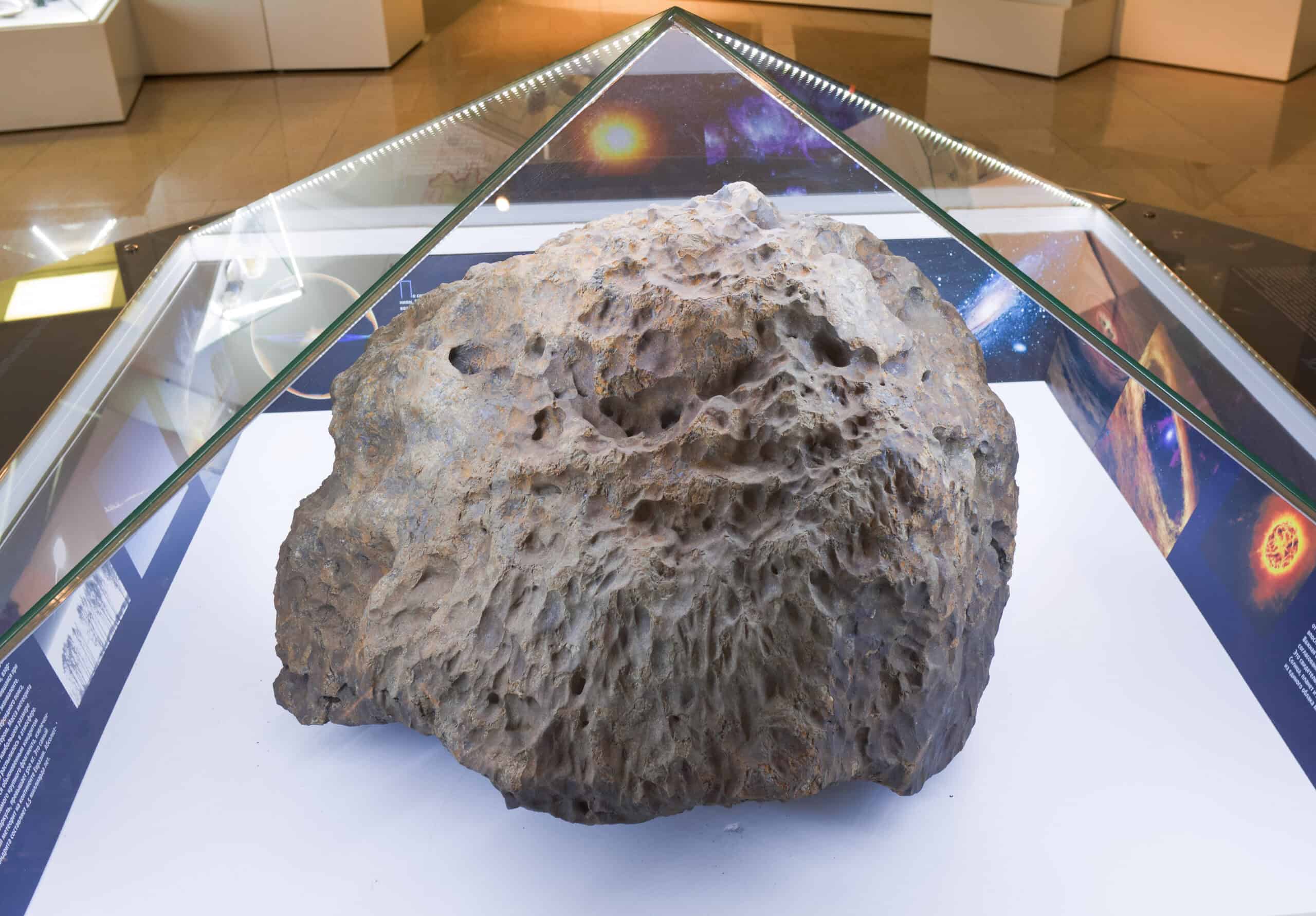
The Chelyabinsk Meteorite is unique not only for its composition but also for the dramatic circumstances of its fall. On February 15, 2013, a large meteor entered Earth’s atmosphere over Russia and exploded with the force of approximately 500 kilotons of TNT, causing extensive damage in the Chelyabinsk region. The shockwave from the explosion shattered windows and injured over 1,500 people, making it the only meteorite in recorded history to cause such widespread human injury. Fragments of the meteorite, which were later collected and studied, revealed that it is a type of ordinary chondrite, a common type of stony meteorite. However, the Chelyabinsk Meteorite’s significance lies in its story and the sheer power of its impact, which served as a stark reminder of the potential dangers posed by near-Earth objects. The event was widely witnessed and documented, providing scientists with valuable data on the behavior of meteoroids entering the Earth’s atmosphere. The meteorite’s legacy continues to impact scientific research and public awareness of space hazards.
Esquel Meteorite (Argentina, 1950s)
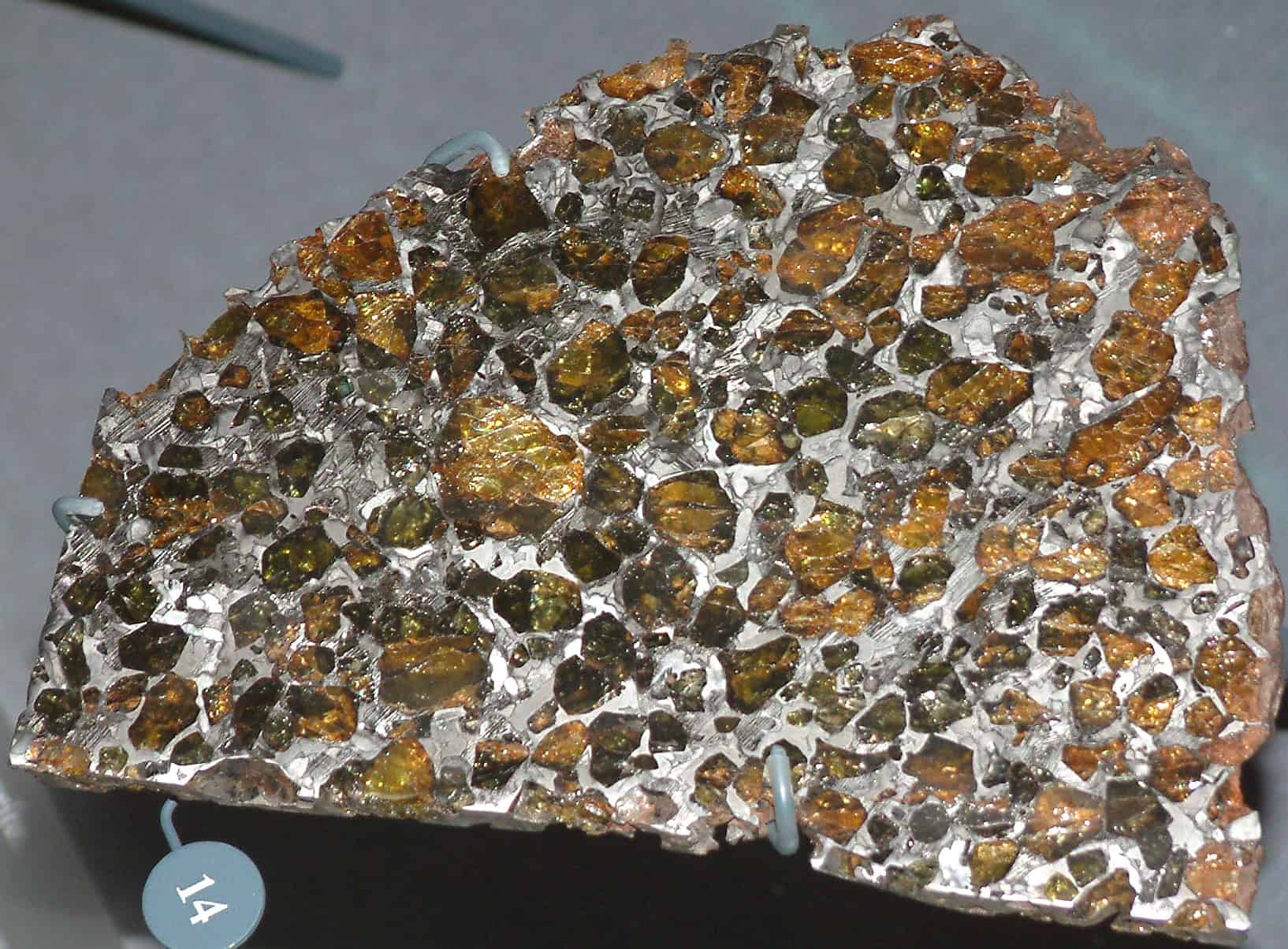
The Esquel Meteorite, discovered near the town of Esquel in Patagonia, Argentina, is one of the most beautiful and scientifically valuable meteorites ever found. This pallasite meteorite is composed of an iron-nickel matrix filled with large, gem-quality olivine crystals, which are also known as peridot when they reach gemstone quality. The meteorite’s structure and composition make it a striking specimen, with the olivine crystals creating a stunning contrast against the metallic background. The Esquel Meteorite is particularly valued by collectors and researchers because of the clarity and size of its olivine crystals, which are among the finest found in any meteorite. Its age, estimated at 4.5 billion years, places it at the very beginning of the Solar System, making it a key specimen for studying the early materials that formed the planets. The meteorite’s combination of aesthetic appeal and scientific importance has made it one of the most coveted meteorites in the world, with slices of Esquel highly sought after by museums and private collectors alike.
Willamette Meteorite (USA, 1902)
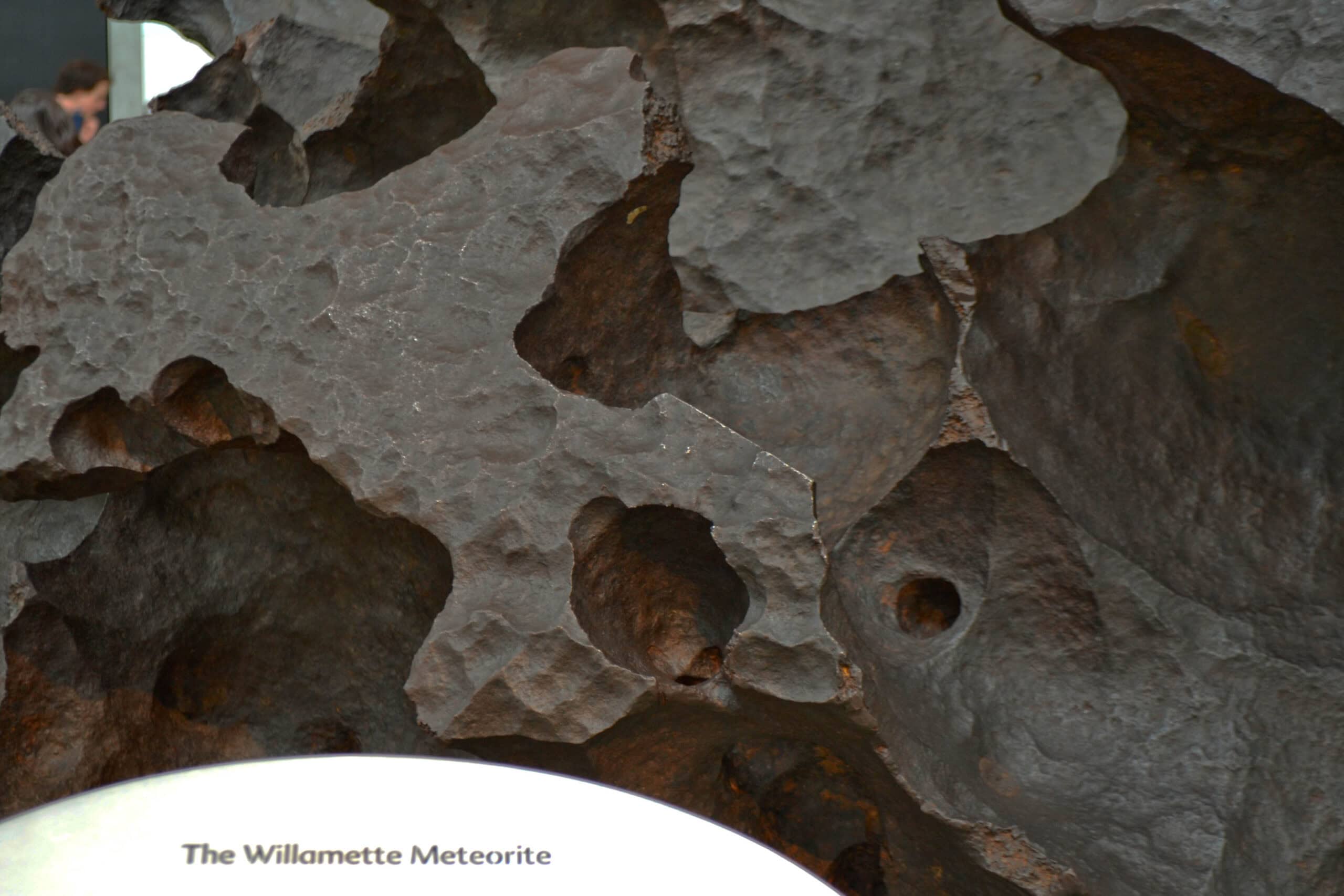
The Willamette Meteorite, discovered in Oregon, USA, in 1902, is one of the largest meteorites ever found in North America, weighing over 16 tonnes. This iron-nickel meteorite has a unique and storied history, as it was long revered by the indigenous Clackamas people, who regarded it as a sacred object known as “Tomanowos.” The meteorite’s distinctive surface features, including deep pits and grooves, are believed to have been formed by the intense heat and pressure of its entry into Earth’s atmosphere. The Willamette Meteorite’s cultural significance, combined with its size and scientific value, makes it one of the most unique meteorites ever collected. It is currently housed at the American Museum of Natural History in New York, where it continues to be an object of fascination for both scientists and the public. The meteorite’s connection to indigenous culture and its status as one of the largest meteorites on Earth make it an irreplaceable piece of natural history.
Conception Junction Meteorite (USA, 2006)
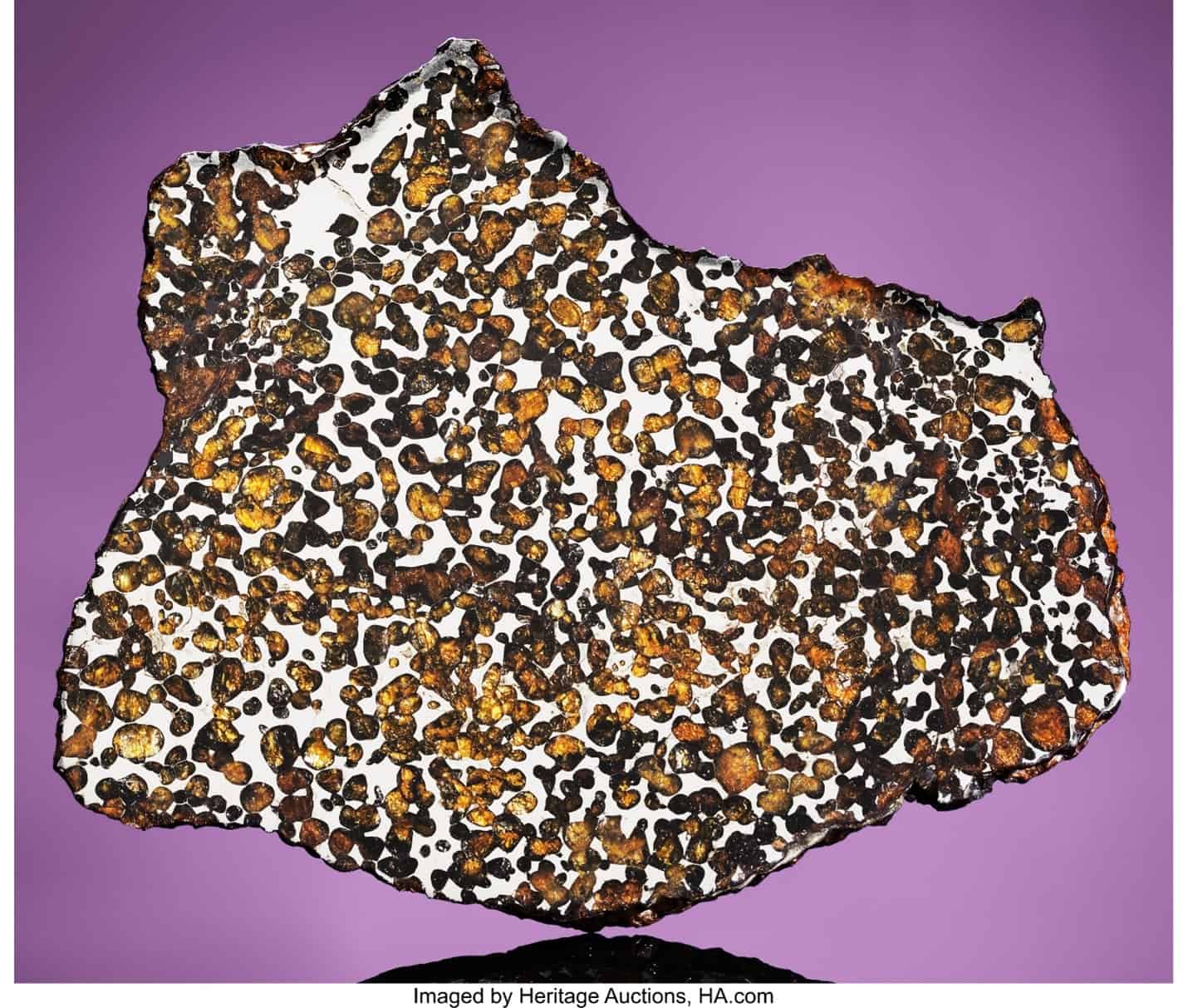
Discovered by a farmer in Conception Junction, Missouri, in 2006, the Conception Junction Meteorite is a pallasite meteorite that contains olivine crystals embedded in an iron-nickel matrix. What makes this meteorite particularly unique is its origin, as researchers believe it was once part of an asteroid that orbited between Mars and Jupiter. The meteorite’s structure, with olivine crystals scattered throughout its surface like chocolate chips in a cookie, is both visually striking and scientifically significant. Pallasite meteorites are among the rarest types of meteorites, making the Conception Junction Meteorite a valuable find for both collectors and researchers. Its discovery in a relatively remote location adds to its uniqueness, and the meteorite has since become a prized specimen for studying the processes that occur in the early Solar System. The Conception Junction Meteorite’s combination of rarity, beauty, and scientific importance makes it one of the most unique meteorites ever collected.
Springwater Meteorite (Canada, 1931)
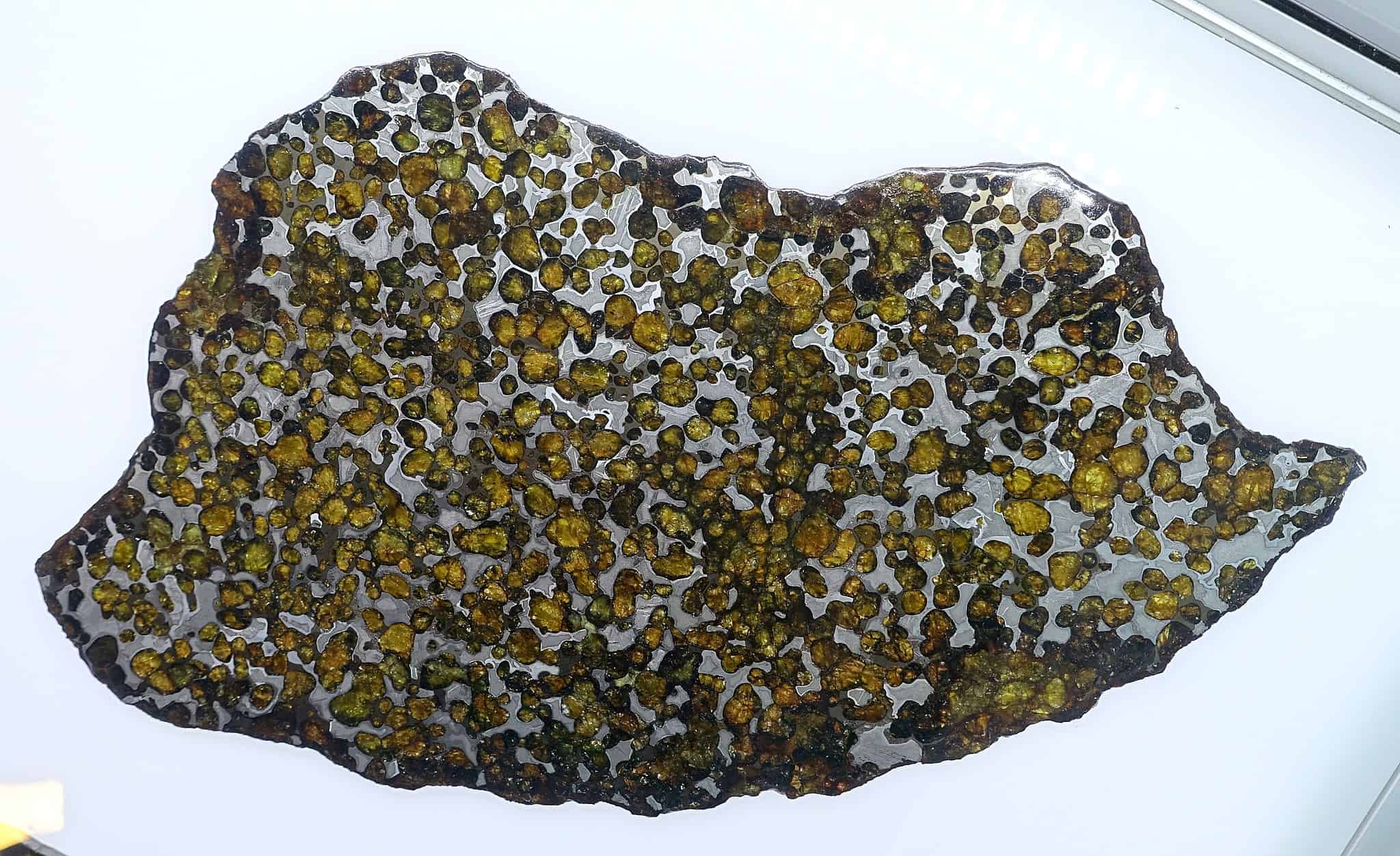
The Springwater Meteorite, discovered in Saskatchewan, Canada, in 1931, is one of the finest examples of a pallasite meteorite. This type of meteorite is known for its striking appearance, with olivine crystals embedded in a nickel-iron matrix, and the Springwater Meteorite is no exception. The meteorite is believed to be 4.5 billion years old, making it one of the oldest objects in the Solar System. The olivine crystals in the Springwater Meteorite are particularly large and well-formed, making it a highly desirable specimen for both scientific study and private collections. The meteorite’s discovery in a rural farming community adds to its unique story, as it was found by chance and later recognized for its scientific value. The Springwater Meteorite’s combination of age, rarity, and beauty makes it one of the most unique meteorites ever collected, and it continues to be studied for insights into the formation of the Solar System.
Gibeon Meteorite (Namibia, Prehistoric)
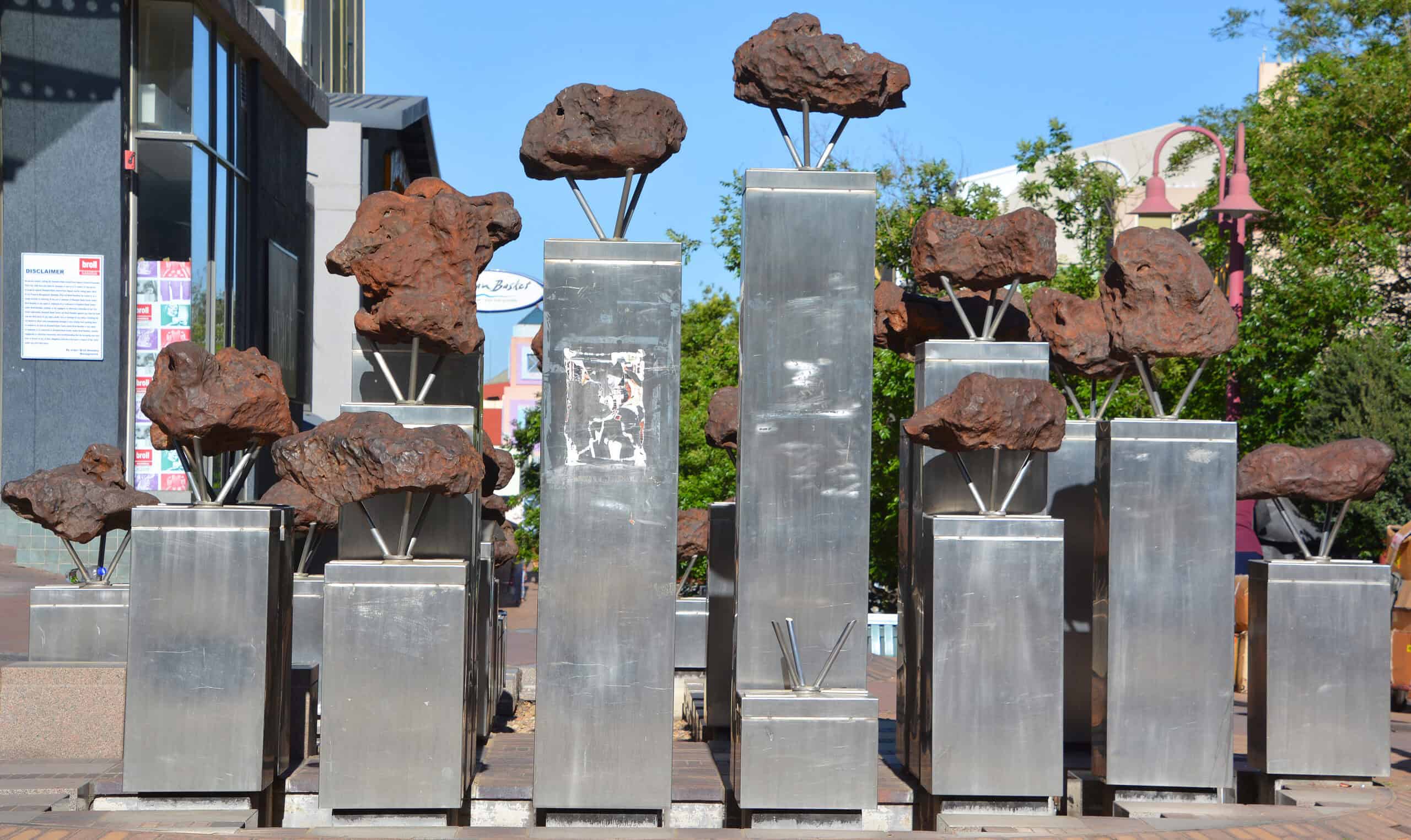
The Gibeon Meteorite, discovered in the Kalahari Desert in Namibia, is one of the largest and most famous meteorites ever found. This iron meteorite is known for its unique crystalline structure, which gives it a distinctive appearance when etched or polished. The Gibeon Meteorite is believed to have fallen to Earth thousands of years ago, and its fragments have been collected and used by indigenous peoples for tools and weapons. The meteorite’s extraordinary size and composition make it one of the most valuable meteorites in the world, with some fragments selling for hundreds of thousands of dollars. The Gibeon Meteorite’s cultural significance, combined with its scientific importance, makes it one of the most unique meteorites ever collected. Its history, dating back to prehistoric times, adds to its mystique and value, making it a prized specimen for both museums and private collectors.
Bencubbin Meteorite (Australia, 1930)
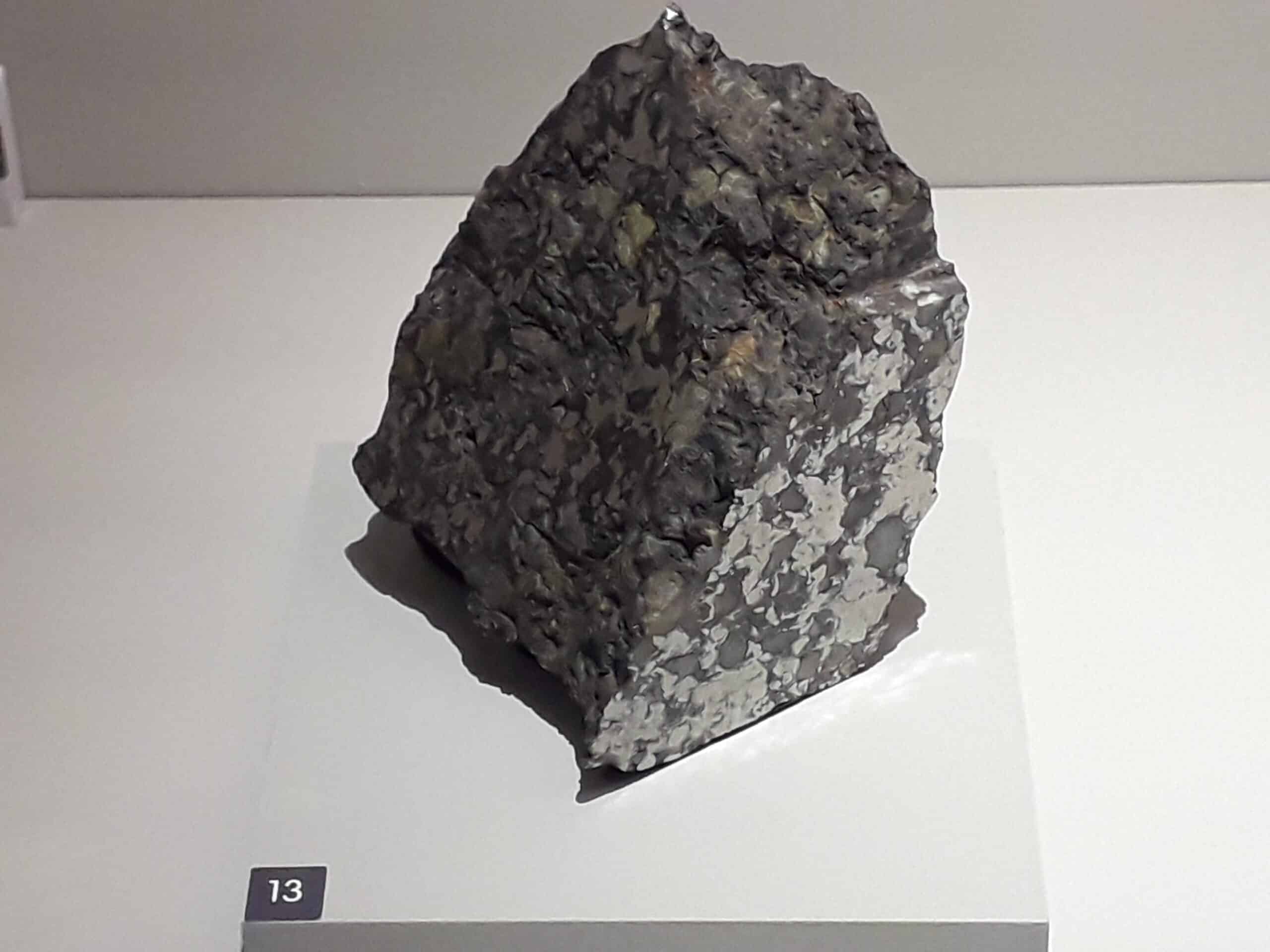
The Bencubbin Meteorite, discovered in Western Australia in 1930, is a unique meteorite that is believed to be the result of an interstellar collision. This meteorite is composed of two distinct types of material: carbonaceous chondrite and metal. The theory is that the Bencubbin Meteorite was formed when two asteroids of very different compositions collided at high speed, causing their materials to mix and fuse together. The meteorite’s structure, with large blobs of carbonaceous chondrite material trapped in metal, is highly unusual and makes it a one-of-a-kind specimen. The Bencubbin Meteorite is so unique that it has its own classification category, known as Bencubbinites. Its composition and the story of its formation make the Bencubbin Meteorite one of the most unique meteorites ever collected, offering insights into the violent processes that occur in space.
Tektites (Victoria, Australia)
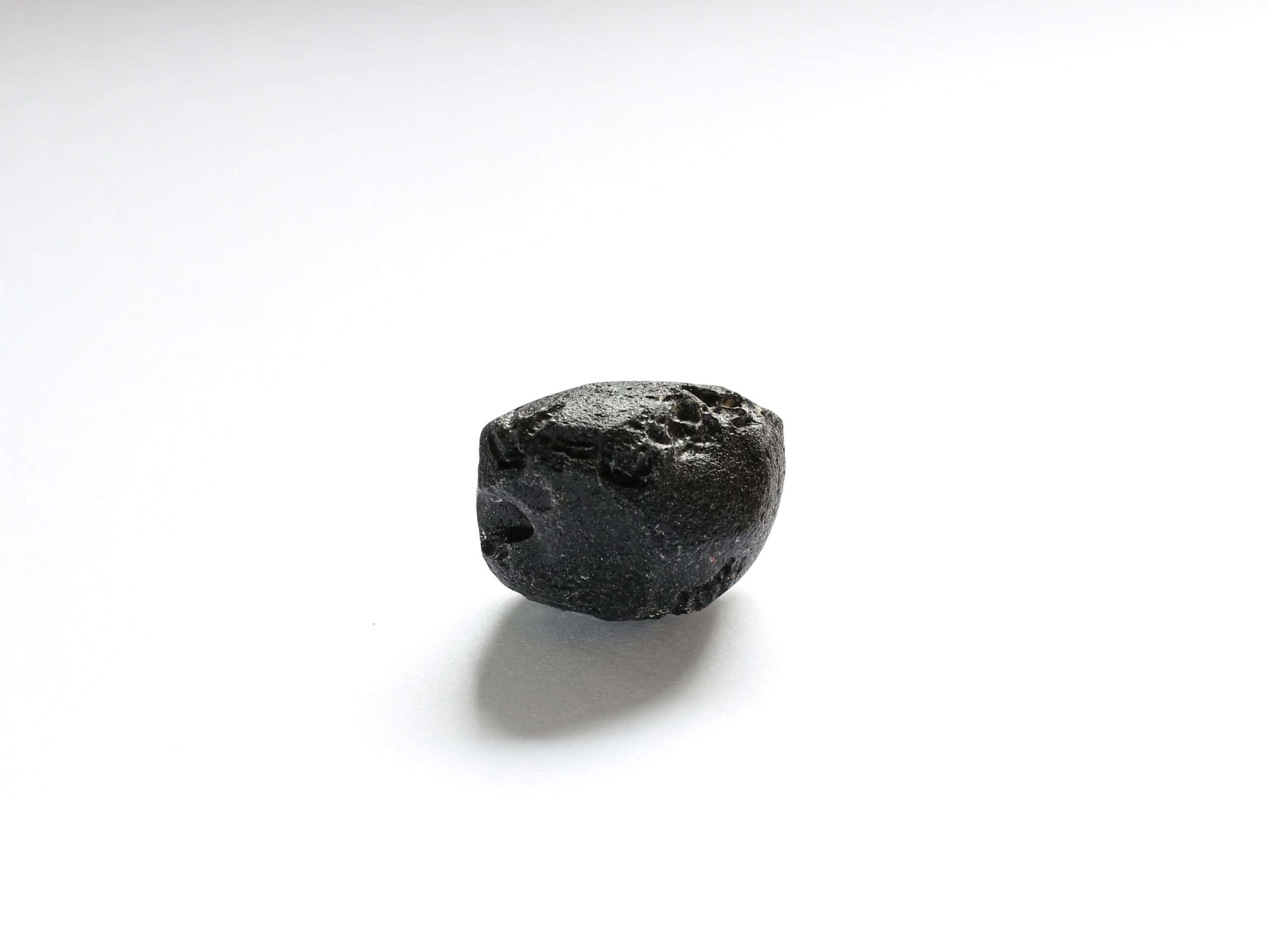
Tektites are not traditional meteorites but are formed from molten material ejected during an asteroid impact. These glassy black rocks, found in Victoria, Australia, have mysterious origins and are known for their unique shapes, which include disks, buttons, dumbbells, and ladles. Tektites are believed to have been formed when an asteroid struck the Earth, sending molten material into space, which then cooled rapidly and fell back to Earth. The asteroid that created Victoria’s tektites likely struck somewhere around present-day Cambodia, and the tektites were scattered across Southeast Asia and Australia. The unique formation process and the intriguing shapes of tektites make them a fascinating subject of study. Their contribution to understanding the dynamics of asteroid impacts and their influence on the design of spacecraft heat shields add to their significance. While not technically meteorites, tektites are closely related to space rocks and are among the most unique objects ever collected from space.
Lunar Meteorite (Libya)
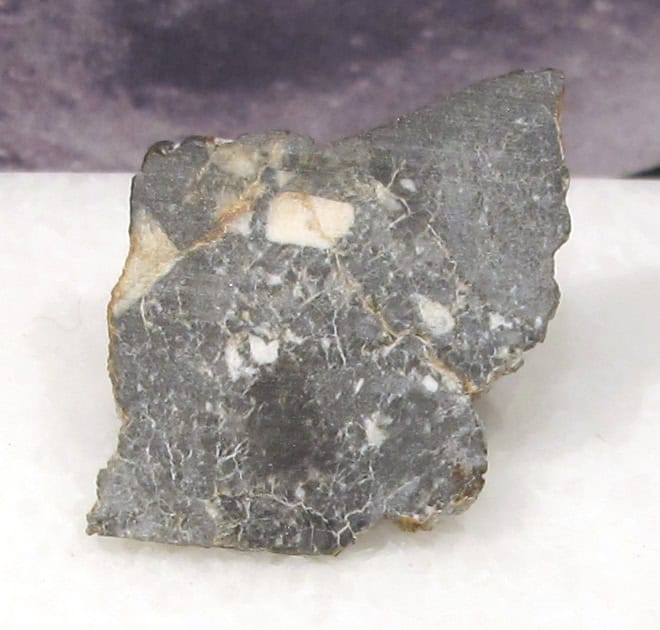
This lunar meteorite, which crash-landed in the Libyan desert, is a fragment of the Moon that was ejected during a meteor impact and eventually made its way to Earth. What makes this meteorite unique is its pristine condition, as it shows no signs of weathering due to the lack of atmosphere on the Moon. The meteorite is a volcanic piece of basalt, estimated to be around 3.3 billion years old, but it looks as fresh as a recent lava flow. Lunar meteorites like this one provide scientists with direct access to material from the Moon, offering valuable insights into its geological history and the processes that have shaped its surface. The rarity of lunar meteorites and the difficulty of their journey to Earth make this specimen one of the most unique meteorites ever collected.
Martian Meteorite (Egypt, 1911)
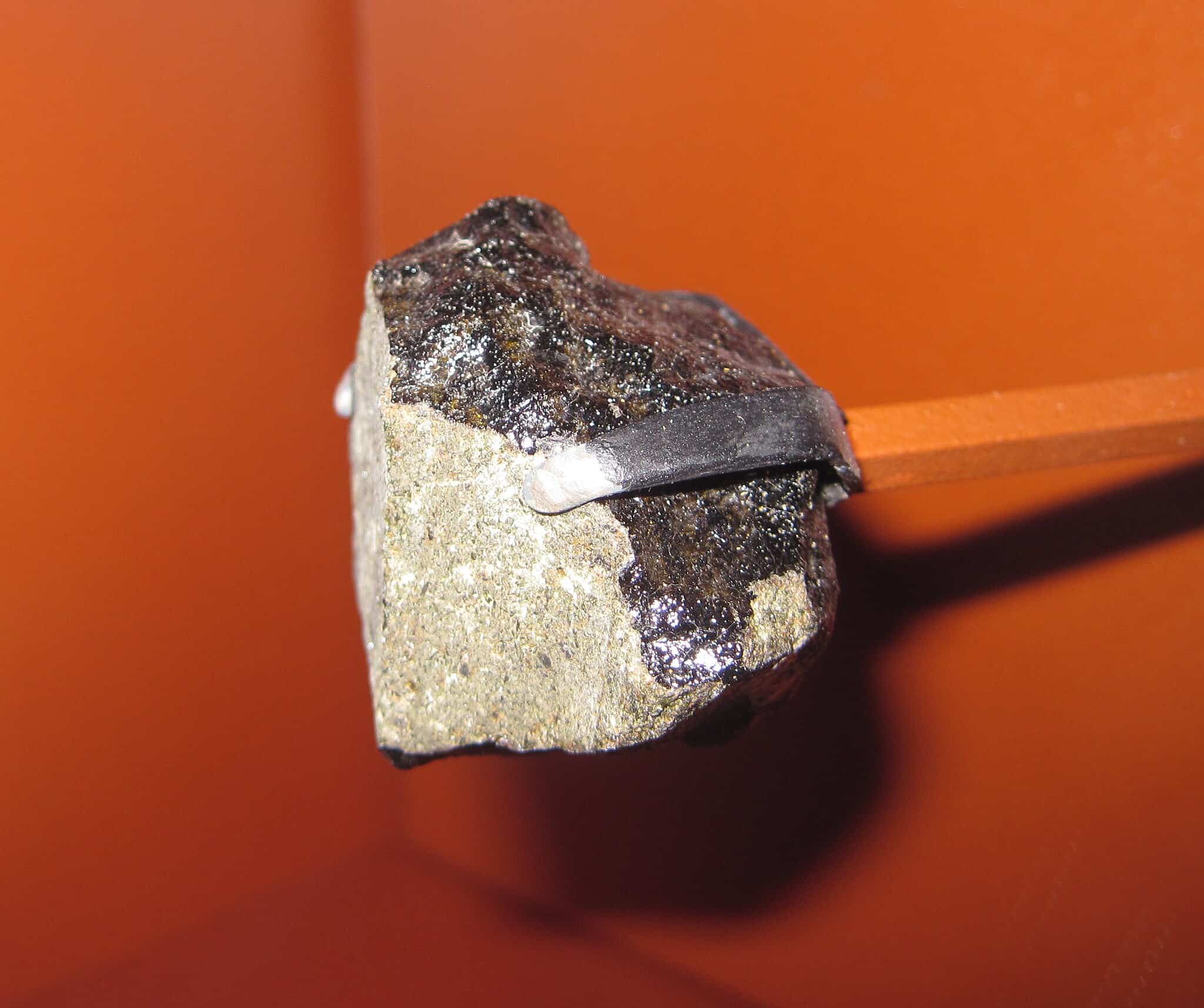
The Nakhla Meteorite, found in Egypt in 1911, is one of the most famous Martian meteorites ever discovered. This meteorite is believed to have originated from Mars and was ejected into space during a meteor impact before eventually landing on Earth. What makes the Nakhla Meteorite unique is its association with the story of a dog allegedly being killed by the meteorite’s fall, although this tale remains unverified. The meteorite’s composition, which includes minerals and gases that are unique to Mars, provides valuable information about the planet’s geological history and potential for life. The Nakhla Meteorite is one of the oldest Martian meteorites, estimated to be around 1.3 billion years old, and its discovery has contributed significantly to our understanding of the Red Planet. The rarity of Martian meteorites and the stories surrounding the Nakhla Meteorite make it one of the most unique meteorites ever collected.
Cranbourne Meteorite (Australia, 1860)
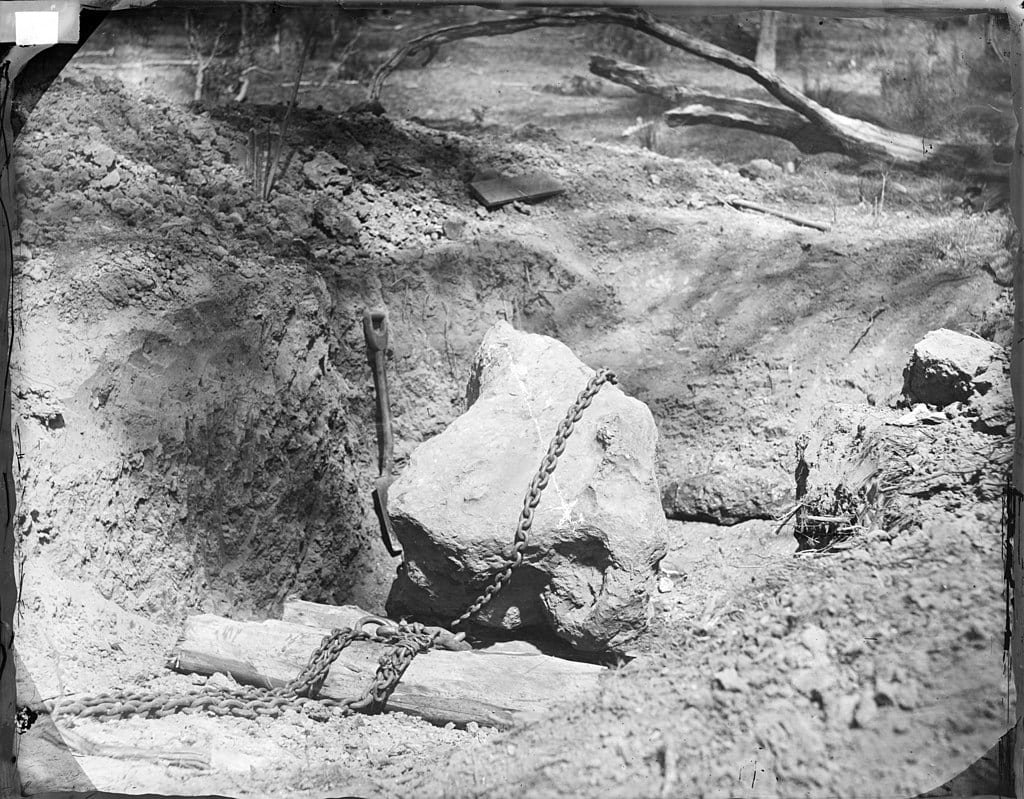
The Cranbourne Meteorite, discovered in Victoria, Australia, in 1860, is one of the largest iron meteorites ever found. This meteorite was known to the indigenous people of the area long before European settlers recognized its significance. The meteorite’s unique metallic properties, including its ability to produce a metallic sound when struck, made it an object of interest to both the indigenous people and the early settlers. The Cranbourne Meteorite was eventually recognized as a meteorite by an amateur geologist, and its discovery made it an international sensation. At the time, it was the largest iron meteorite in the world, and fragments of it continued to be found for decades. The Cranbourne Meteorite’s size, cultural significance, and the story of its discovery make it one of the most unique meteorites ever collected. Its historical and scientific value continues to be recognized, and it remains an important specimen in the study of meteorites.
This article originally appeared on Rarest.org.
More from Rarest.org

Captive breeding programs have played a crucial role in saving some of the world’s most endangered species from extinction. By carefully managing and breeding animals in controlled environments, conservationists have been able to increase population numbers and reintroduce species into their natural habitats. Read more.
13 Leading Advertising Agencies with High-Profit Margins

In the fast-paced world of advertising, certain agencies stand out not just for their creativity but also for their ability to generate impressive profit margins. Read more.
14 Rarely Heard Folktales and Legends

Folktales and legends have been passed down through generations, weaving together the cultural fabric of communities around the world. While some stories are widely known, others remain hidden gems, offering unique insights into the beliefs, fears, and values of different cultures. Read more.
